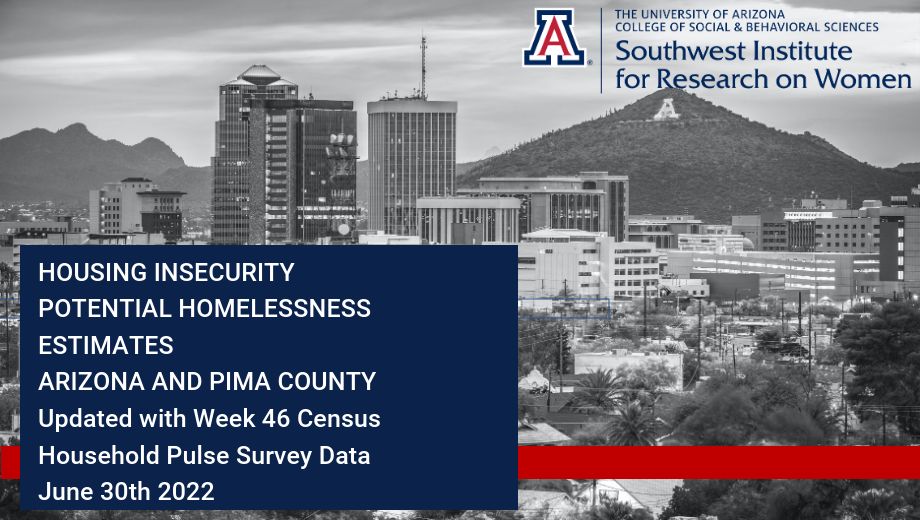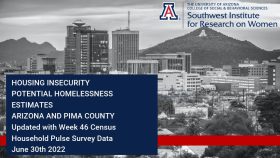
The University of Arizona Southwest Institute for Research on Women has released its thirty-fourth update to its report on Housing Insecurity Indicators and Potential Homelessness Estimates for Arizona and Pima County. This report measures current housing insecurity with newer census data.
The report notes that while the macroeconomic situation has continued to improve steadily at both the national and state levels, some indicators of concern remain.
With the unemployment rate and applications for unemployment insurance in Arizona both at historic lows, why are these indicators of financial strain among renters and mortgage holders increasing relative to previous surveys? One reason could include the distribution of 2021 Child Tax Credits payments (6 months of payments from January-June of 2021) over recent months, which have substantially and temporary reduced financial strain, especially among lower-income households with children.
However, as these payments have now been exhausted by most households, multiple indicators of financial strain have risen in this survey wave. So while more renters are behind (relative to recent waves) a much larger proportion are much less behind on their rent on average.
Some indicators of concern are:
- Rents continue to rise in Tucson with measures of average and median rent increasing 33-36% over the past two years. And the average rents of studio and 1-bedroom apartments have been increasing faster than larger units, contributing to the declining stock of affordable housing.
- 65% of Arizona renters reported an increase in their monthly rent in the last year and 53% reported an increase of $100 or more. This indicates that most renters are being directly impacted by rising rent prices across Arizona.
- The number of people experiencing homelessness in Pima County has risen between 2020 and 2022, but the magnitude of this increase is difficult to discern for reasons detailed below. Racial/ethnic disparities in financial strain have increased in measures of households not being current on rental payments and experiencing difficulty meeting spending needs.
- Individuals (nationwide) reporting either a lot of difficulty or no ability to walk, see, hear, or concentrate also are disproportionately likely to report being behind on rent payments.
- It appears that members of historically marginalized groups (especially people living with disabilities) are not benefiting from the improving economy as quickly on average as other demographic groups.
- Last, the number of eviction filings in Pima County hit a pandemic-era peak in January with 1077 filings, followed by 828 filings in February, 944 filings in March, and 853 in April.
